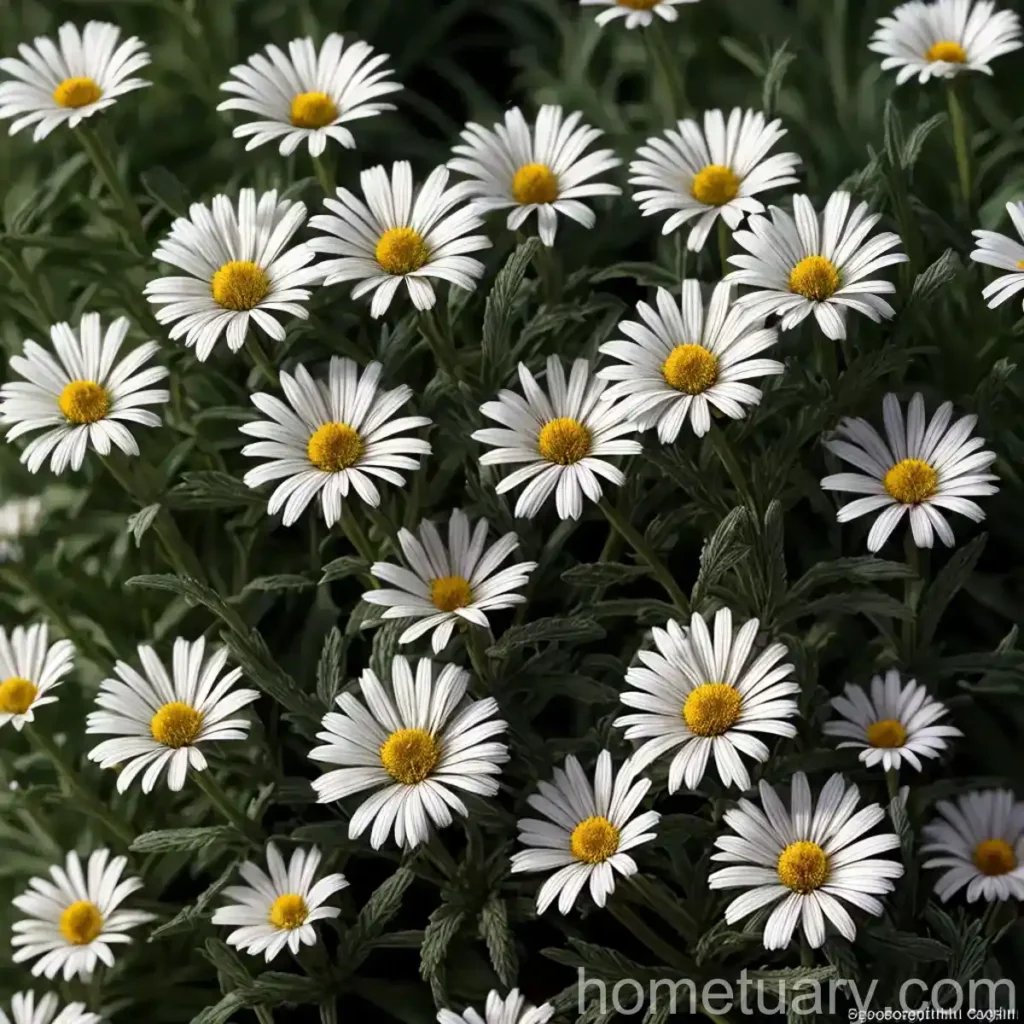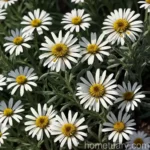Shasta Daisy (Leucanthemum x superbum ‘Fiona Coghill’)
Introduction
Welcome to our blog post on the stunning and beloved shasta daisy, specifically the Leucanthemum x superbum ‘Fiona Coghill’ variety. This article aims to provide you with comprehensive insights into the culture, uses, care, and maintenance of this beautiful and popular perennial plant. Whether you’re a seasoned gardener or a novice enthusiast, this guide will equip you with the necessary knowledge to cultivate and cherish the shasta daisy in your garden.
What is Shasta Daisy (Leucanthemum x superbum ‘Fiona Coghill’)?
The Shasta Daisy, scientifically known as Leucanthemum x superbum ‘Fiona Coghill,’ is a delightful and iconic flowering perennial that belongs to the Asteraceae family. Originating from North America, this cultivar is a hybrid of Leucanthemum maximum and Leucanthemum lacustre.
The ‘Fiona Coghill’ variety is particularly renowned for its charming blooms, which boast classic white petals and golden-yellow centers. Its vigorous growth habit, coupled with its abundant flowering, has made it a favorite among gardeners and landscapers alike, adding a touch of elegance to any outdoor space.
Key Takeaways – Shasta Daisy (Leucanthemum x superbum ‘Fiona Coghill’)
Before delving into the intricacies of cultivating and caring for the shasta daisy, let’s outline the key takeaways of this remarkable plant:
- Plant Name: Shasta Daisy (Leucanthemum x superbum ‘Fiona Coghill’)
- Family: Asteraceae
- Growth Habit: Herbaceous perennial
- Flower Color: White with yellow centers
- Hardiness Zones: 5-9
- Blooming Season: Late spring to late summer
- Mature Height: 2-3 feet
- Attracts: Butterflies and pollinators
- Uses: Borders, containers, cut flowers, and landscapes
Now, let’s explore the essential aspects of the shasta daisy, including its culture, uses, water requirements, sunlight preferences, fertilizer needs, soil conditions, pruning, propagation, and its popularity among gardeners and landscaping enthusiasts.
Culture
Cultivating the shasta daisy (Leucanthemum x superbum ‘Fiona Coghill’) involves understanding its unique cultural requirements to ensure optimal growth and prolific flowering. Here’s a detailed overview of its cultural preferences:
Water
- Regular Watering: The shasta daisy thrives in well-drained soil and appreciates consistent moisture, especially during its active growth periods. While it is important to avoid waterlogged conditions, ensure that the plant receives an average amount of water, particularly in dry spells.
- Moisture Monitoring: To gauge the plant’s watering needs, check the soil moisture regularly, aiming to keep it evenly moist but not saturated. A layer of organic mulch around the base of the plant can aid in moisture retention and weed suppression.
Sunlight
- Full Sun: The shasta daisy exhibits its best flowering performance when planted in full sunlight. Aim to provide at least 6-8 hours of direct sunlight daily to promote robust growth and abundant blooming. In regions with intense heat, some afternoon shade can be beneficial to prevent stress on the plant.
Fertilizer
- Balanced Fertilization: Prior to the growing season, apply a balanced, slow-release fertilizer to the soil around the shasta daisy. Opt for a formulation with a higher phosphorus content to encourage prolific flowering.
- Feeding Frequency: Consider supplementing with a diluted liquid fertilizer every 4-6 weeks during the active growth phase to support the plant’s nutrient requirements. Avoid over-fertilization, as excessive nitrogen can lead to lush foliage at the expense of flowers.
Soil
- Well-Drained Soil: The shasta daisy thrives in loamy, well-drained soil with a slightly acidic to neutral pH (6.0-7.0). Good drainage is crucial to prevent waterlogging, which can result in root rot and other moisture-related issues.
Pruning
- Deadheading: Regular deadheading of spent blooms not only maintains the plant’s aesthetics but also encourages continuous flowering throughout the season. Snip off faded flowers at their base to promote the emergence of fresh buds and prolong the blooming period.
- Fall Cleanup: As the growing season draws to a close, consider cutting back the foliage of the shasta daisy to a few inches above ground level. This practice helps to tidy up the plant and prepares it for winter dormancy.
Propagation
- Division: Propagating the shasta daisy through division is a viable method to rejuvenate established clumps and create new plants. In early spring or fall, carefully dig up the plant, ensuring the retention of healthy, vigorous divisions, and replant them in desired locations.
- Root Cuttings: Additionally, the shasta daisy can be propagated through root cuttings taken from healthy, actively growing roots. Plant the root sections in a suitable growing medium, maintain adequate moisture, and provide warmth to facilitate the development of new plants.
Container Popularity
The shasta daisy, including the ‘Fiona Coghill’ variety, is well-suited for container cultivation, adding a touch of elegance and vibrancy to porches, patios, and balconies. Its compact growth habit and prolific flowering make it an ideal choice for container gardens and landscape accents.
Key Considerations for Container Cultivation:
- Container Selection: Opt for spacious containers with adequate drainage holes to accommodate the shasta daisy’s root system and promote soil aeration.
- Growing Medium: Utilize a well-draining, nutrient-rich potting mix to provide a favorable growing environment for the plant.
- Watering: Monitor the moisture levels in the container and water the plant regularly to prevent the soil from drying out completely.
- Sunlight: Position the container in a location that receives ample sunlight, ensuring that the plant receives the necessary light for robust growth and flowering.
Common Diseases
The shasta daisy is relatively resilient to diseases, especially when grown in favorable conditions and provided with proper care. However, certain issues may arise, necessitating vigilance and proactive management to maintain the plant’s health and vigor.
Disease Diagnosis
- Powdery Mildew: A common fungal disease that manifests as a powdery, white coating on the foliage. Ensure good air circulation, avoid overhead watering, and consider applying fungicidal treatments if severe outbreaks occur.
- Leaf Spot: Characterized by the presence of circular, dark lesions on the leaves, often caused by fungal pathogens. Remove and destroy affected foliage, and apply fungicidal sprays to mitigate the spread of the disease.
- Root Rot: Occurs in waterlogged or poorly drained soil, leading to the decay of the plant’s root system. To prevent root rot, ensure proper drainage and avoid overwatering.
Common Pests
Despite its general resilience, the shasta daisy may occasionally encounter pest infestations, which can impact its overall vitality and flowering performance.
Pest Control
- Aphids: These tiny, sap-sucking insects may gather on the tender new growth of the shasta daisy, potentially stunting its development. Consider employing insecticidal soaps or horticultural oils to deter and control aphid populations.
- Spider Mites: Commonly observed on the undersides of leaves, these pests can cause stippling and discoloration. Regularly hose down the plant to minimize mite infestations, and resort to insecticidal treatments if necessary.
Botanist’s Tips
As a botanist passionate about the shasta daisy and its stunning ‘Fiona Coghill’ variety, I’d like to share a few additional tips to enrich your experience in cultivating and enjoying these remarkable plants:
- Companion Planting: Pair the shasta daisy with other perennials such as lavender, salvia, and catmint to create visually appealing and diverse flowerbeds. The complementary colors and textures of these plants enhance the overall aesthetic of the garden.
- Overwintering Protection: In regions with harsh winters, provide a layer of mulch around the base of the shasta daisy to insulate the roots and protect them from freezing temperatures. This simple practice can safeguard the plant’s vitality during the dormant season.
Fun Facts
To further deepen your appreciation for the shasta daisy and its ‘Fiona Coghill’ variety, here are some engaging and intriguing fun facts about these enchanting plants:
- Native Ambience: The shasta daisy is native to the western United States, particularly California and Oregon, where it graces meadows and open grasslands with its radiant blooms.
- Cultural Significance: Revered as a symbol of purity and innocence, the shasta daisy has been incorporated into floral arrangements and gardens for centuries, portraying timeless elegance and charm.
- Historical Inspiration: The shasta daisy was named after the snow-capped Mount Shasta in California, depicting the resemblance of its pure white flowers to the glistening snow atop the mountain.
Links to External Resources
For further exploration and in-depth understanding of the shasta daisy, its ‘Fiona Coghill’ cultivar, and related topics, I recommend the following external resources:
- Royal Horticultural Society – Leucanthemum x superbum ‘Fiona Coghill’
- University of Florida IFAS Extension – Shasta Daisy in the Garden
- Missouri Botanical Garden – Leucanthemum x superbum ‘Fiona Coghill’
- American Meadows – Shasta Daisy Planting Guide
In conclusion, the shasta daisy (Leucanthemum x superbum ‘Fiona Coghill’) stands as a timeless favorite in the realm of perennial gardening, captivating enthusiasts with its radiant blooms and enduring charm. By embracing its cultural nuances, tending to its needs, and celebrating its natural splendor, you can cultivate a vibrant and enchanting display of these beloved flowers in your own garden.
Happy gardening and may your shasta daisies bloom with boundless beauty!
In crafting this comprehensive blog post, the essential elements of the shasta daisy (Leucanthemum x superbum ‘Fiona Coghill’) have been thoroughly explored, encompassing its culture, uses, care practices, and its significance in the world of horticulture and landscaping. Whether you’re a seasoned gardener, a nature enthusiast, or someone eager to delve into the world of plant cultivation, this guide provides a valuable perspective on the cultivation and appreciation of this iconic perennial.















